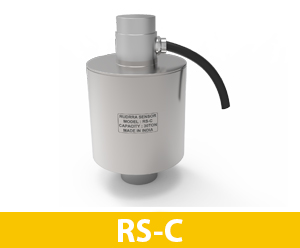1. Tank and Silo Weighing
Compression load cells are widely used in weighing tanks and silos across industries like agriculture, chemicals, and food processing. By installing load cells beneath the supports of the tank or silo, accurate weight measurements of the stored materials can be obtained. This helps manage inventory, control batching, and prevent overfilling, all without needing internal sensors.
2. Truck Weighbridges
Weighbridges, or truck scales, depend on compression load cells to measure the total load carried by vehicles. These load cells are placed under the scale platform and are built to withstand extremely heavy weights and outdoor environments. They ensure that vehicles are not overloaded and help industries stay compliant with road safety and weight regulations.
3. Structural Load Testing
In civil engineering and construction projects, compression load cells are used for structural testing of buildings, bridges, and other infrastructure. They measure the load-bearing capacity of structural components, ensuring safety and performance standards are met. Engineers rely on these load cells to gather real-time data during test loads.
4. Material Testing Machines
Compression load cells are essential in material testing labs where the strength and durability of different materials are evaluated. They are integrated into machines like Universal Testing Machines (UTMs) to test how much compressive force materials can handle. This testing helps determine whether a material is suitable for its intended application.
5. Hydraulic Presses
Industrial presses used in forming, molding, and stamping applications use compression load cells to monitor the force being applied during each operation. Accurate force measurement is critical for product consistency and machine protection. Compression load cells help operators maintain the required pressure while preventing overloading.
6. Conveyor Belt Systems
In industries like mining, packaging, and food processing, compression load cells are installed beneath conveyor belts to measure the weight of materials moving along the line. This ensures precise load monitoring, helps manage throughput, and supports automated control systems for improved efficiency.
7. Crane and Hoist Load Monitoring
Compression load cells are integrated into cranes, hoists, and lifting equipment to detect overload conditions. These cells provide real-time weight feedback, which helps avoid accidents and equipment damage. This safety feature is especially important in construction sites, warehouses, and shipping yards.
8. Automated Production Lines
Modern production lines use compression load cells to measure force or weight during assembly and quality control processes. From checking clamping pressure to validating part weights, these load cells ensure consistent product quality and help automate complex manufacturing steps with precision.
9. Agricultural Equipment
Compression load cells are used in agricultural machinery for weighing fertilizers, grains, and livestock feed. By providing accurate measurements, they support precision farming practices. These load cells help farmers distribute the right amount of material, reducing waste and improving productivity.
10. Renewable Energy Equipment
In the renewable energy sector, compression load cells are used in wind turbine bases, solar panel structures, and energy storage units. They monitor structural loads and weight distributions, contributing to the safety and stability of the equipment. As energy systems become smarter, load cells play an increasingly vital role in performance tracking.








